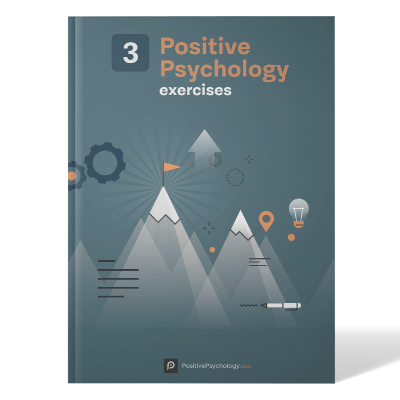Personality & Character Traits: The Good, the Bad, the Ugly
 We would all benefit from being more aware of our characteristics and personality traits. That’s because they are significant predictors of our behaviors and attitudes.
We would all benefit from being more aware of our characteristics and personality traits. That’s because they are significant predictors of our behaviors and attitudes.
The world we live in is different from what it was 10, five, or even one year ago. Thanks to social media, easy-to-use communication tools, and globalization, the pool of possibilities and available information are constantly expanding.
Without a clear idea of one’s own preferences, making the right choice can be extremely difficult and confusing. Everyone’s personality is unique, and knowing what makes who we are can lead to more life satisfaction, better life choices, and overall success in both personal and professional spheres.
Before you continue, we thought you might like to download our three Strengths Exercises for free. These detailed, science-based exercises will help you or your clients realize your unique potential and create a life that feels energized and authentic.
This Article Contains:
- Character and Personality Traits Defined
- Character Trait Theories
- The Big Five or OCEAN Model
- The PEN Model
- Examples of Positive and Negative Characteristics
- Character Traits Worksheets for Kids and Adults (PDFs)
- The Character Traits Anchor Chart and Other Graphic Organizers
- A Take-Home Message
- References
Character and Personality Traits Defined
While character and personality are both used to describe someone’s behaviors, the two examine different aspects of that individual. One’s personality is more visible, while one’s character is revealed over time, through varying situations.
In more concrete terms:
“Personality is easy to read, and we’re all experts at it. We judge people [as] funny, extroverted, energetic, optimistic, confident—as well as overly serious, lazy, negative, and shy—if not upon first meeting them, then shortly thereafter. And though we may need more than one interaction to confirm the presence of these sorts of traits, by the time we decide they are, in fact, present, we’ve usually amassed enough data to justify our conclusions.
“Character, on the other hand, takes far longer to puzzle out. It includes traits that reveal themselves only in specific—and often uncommon—circumstances, traits like honesty, virtue, and kindliness.”
Lickerman, 2011
While personality is easier to spot, it’s largely static and slow to evolve. Character, on the other hand, takes longer to discern but is easier to change. That’s because character is shaped by beliefs, and with enough effort and motivation, changing one’s perspective and view of the world can lead to a shift in one’s character.
The malleability of character makes sense when you look at human evolution. In order for our ancestors to survive, they had to adapt to new environments and change with the times—and this remains true in the modern era.
If an individual deems a change in their surroundings to be significant, then their beliefs will transform to accommodate the change.
For instance, an individual who might have a shy personality can learn to switch their attitude toward public speaking when stepping into the role of a teacher. The new social and external demands lead to an internal shift that changes their demeanor.
In this way, even if an individual’s inborn preference is to shy away from the public, the beliefs and values that shape their behavior can evolve to reflect the values of their immediate groups and communities. Such awareness and adaptability help with survival (Kurtus, 2011).
The bottom line is, despite the significance of our inborn personality traits, we can overcome them as required by personal or cultural demands.
TED Talk: Who Are You, Really? The Puzzle of Personality by Brian Little
In this talk, personality expert Brian Little explains the phenomenon of overcoming one’s inborn traits and explores how our character is modified by the core projects we work on.
Character Trait Theories
Tools for identifying personality traits have never been more plentiful. “In the U.S. alone, there are about 2,500 personality tests” to choose from (Ash, 2012). Yet, quantity does not imply quality.
Due to immense variations in personality, it is difficult to divide people neatly into different classifications. Instead, assessing individuals by the most common personality traits can empower us to deduce a person’s behavior by looking at the average of their choices (Pappas, 2017).
Below are two of the most widely used personality tools that can identify your personality traits. Some pros and cons of each are also highlighted.
A quick note is that we have reviewed only scale-based personality assessments, rather than profile-based assessments. The difference is that scale-based assessments treat personality traits as existing on a continuum, whereas profile-based assessments classify individuals according to binary categories (e.g., an introvert or an extrovert).
Common profile-based assessments that you may be familiar with include the Myers-Briggs Type Indicator (MBTI) and the Enneagram. While these tools can be a fun way to gain some self-insight, they are often critiqued by scientists (Grant, 2013).
A key criticism is that the results of profile-based assessments pigeonhole individuals into particular categories (e.g., labeling someone as an extrovert or introvert; a thinker or a feeler), but few things in life are so black and white. In reality, it is believed that our personality traits exist on scales with opposite poles, and all of us will fall somewhere between either end of that continuum (e.g., the introversion-extroversion scale).
Put differently, “if the MBTI measured height, you would be classified as either tall or short, even though the majority of people are within a band of medium height” (Krznaric, 2013). Hence, we’ve limited this review to only scale-based assessments, which are more scientifically backed.
The Big Five, or OCEAN Model
Perhaps the most comprehensive and science-backed, personality test available is the Big Five.
Unlike the popular (but disputed) Myers-Briggs Type Indicator (MBTI), this assessment does not divide people into personality profiles but rather analyzes an individual based on the most common traits found within the global community. The traits are easy to remember, as they spell out the acronym OCEAN.
OCEAN stands for:
- Openness:
This describes an individual’s love for novelty experiences. Those with high scores tend to be more creative. Individuals with lower scores tend to be more conservative and prefer routines. - Conscientiousness:
This shows someone’s tendency for organization. Those with high scores are seen as motivated, disciplined, and trustworthy. Lower scores indicate someone less responsible and more likely to get distracted. - Extroversion:
This factor indicates how cheerful and communicative a person can be. If someone scores highly in extroversion, they tend to be social and likely to accomplish their goals. Low scores indicate someone who is introverted and more submissive to authority. - Agreeableness:
This trait describes how someone interacts with those around them. High scores indicate that someone is warm and friendly. Those who tend to be more egocentric and suspicious (or even shy) tend to score lower. - Neuroticism:
Emotional stability can reveal a lot about the likelihood of someone developing moodiness and anxiety. High scores on neuroticism indicate someone who is less-assured, and low scores describe a person who is calm and confident (Westerhoff, 2008).
These categories serve as an umbrella that influences other personality areas, such as:
- Openness: imagination, feelings, actions, ideas, values, adventurousness, artistic interests, etc.
- Conscientiousness: order, self-discipline, competence, achievement striving, etc.
- Extroversion: warmth, friendliness, assertiveness, activity level, positive emotions, etc.
- Agreeableness: trust, compliance, modesty, altruism, sympathy, cooperation, etc.
- Neuroticism: hostility, depression, impulsiveness, anger, vulnerability, self-consciousness, etc. (ETS, 2012)
Take the test
Those wishing to know their OCEAN results can take any of the following quizzes:
- The Big Five Personality Test
- (Another) Big Five Personality Test
- Personality Test at 123test.com
- Ten Item Personality Measure (available in different languages)
Again, we’ll explore the benefits and drawbacks of the OCEAN model.
Pros:
Unlike the MBTI, which tries to categorize people into one of 16 personality profiles, the Big Five understands that individuals possess certain traits, which need to be measured on a continuum. It is rare to be only on one or the other side of the spectrum.
For instance, saying that extroverts absorb energy when interacting with others and that introverts expend energy when interacting with the outside world is false, as both get energy from their interpersonal relations (Grant, 2015).
“The Big Five structure captures, at a broad level of abstraction, the commonalities among most of the existing systems of personality description, and provides an integrative descriptive model for personality research” (John & Srivastava, 1999).
Thanks to its results that provide scales of different traits rather than profiling the individual, this personality assessment tool can provide a degree of flexibility and versatility, which has enabled researchers to use the assessment to examine the influence of these traits on different areas of life, like mental health, finances, and relationships.
And for the most part, these traits have been shown to be relatively stable. Specifically, in a nine-year study, there was “moderate to high [stability], ranging from 0.73 to 0.97 in men and from 0.65 to 0.95 in women. The highest gender-equal stability was found for openness to experience and the lowest for conscientiousness” (Rantanen, Metsäpelto, Feldt, Pulkkinen, & Kokko, 2007).
More specifically, men showed more stability in traits like neuroticism and extroversion, while women showed more stability in traits like openness to experience, agreeableness, and conscientiousness.
Cons:
Despite its stability and usefulness, the tool does have its flaws.
Here are a few:
1. Too big to fail
As mentioned earlier, the beauty of this tool is its big-picture view of personality traits, but it’s also a limitation. A good analogy to explain this is the categorization of living organisms into plants or animals. While it’s helpful for certain distinctions, it is not helpful for “value predicting specific behaviors of a particular individual” (John, Naumann, & Soto, 2008).
2. Not so universal
While there has been evidence-based research to support the validity of the tool in more than 50 countries, flaws in translation and applicability to non-English-speaking cultures can be found. This results in skewed scores, as was demonstrated by research conducted with a small South American tribe (Dingfelder, 2013).
The PEN Model
Developed by Hans and Sybil Eysenck in 1975, this model looks at the biological factors that trigger or influence personality. The three focal traits examined by this model are psychoticism, extroversion, and neuroticism (Waude, 2017).
The origins of this model date back to the 1960s, but it didn’t originally measure psychoticism (which relates to measures of compassion, morality, as well as creativity). The older model used the Eysenck Personality Inventory to gather and analyze results.
With the addition of psychoticism, the questions were updated and the tool for gathering these results was renamed the Eysenck Personality Questionnaire.
Each of the trait categories explores the following human behaviors:
- Psychoticism:
People who score high in this measure often participate in hostile, reckless, inconsiderate, nonconforming, tough-minded, and impulsive behaviors. Higher levels of testosterone are associated with higher scores in this area. - Extroversion:
Individuals with a high level of extroversion are more outgoing and talkative, and they desire external stimuli. Higher stimulation usually occurs as a result of increased cortical arousal and can be measured through skin conductance, brain waves, or sweating. - Neuroticism:
Those with a high level of neuroticism are more prone to depression and anxiety. The trait is activated by the sympathetic nervous system, which is also responsible for the fight-or-flight response. This can be measured through heart rate, blood pressure, cold hands, sweating, and muscular tension.
Based on these measures, there are four possible quadrants that individuals can fall into:
- Stable extroverts: recognized by their talkative, easygoing, lively, and carefree natures and their leadership qualities
- Unstable extroverts: seen as touchy, restless, impulsive, and irresponsible
- Stable introverts: recognized by their calm, reliable, peaceful, thoughtful, and passive traits
- Unstable introverts: seen as reserved, pessimistic, rigid, anxious, and moody
Those interested in taking the Eysenck Personality Questionnaire can do so here.
Once more, we’ll explore the pros and cons of this personality model.
Pros:
The model looks at both descriptive and causal effects. It examines three specific dimensions, making it easy to understand. And it has demonstrated test–retest reliability.
In fact, when specifically examining the pattern of moods, this assessment is able to predict certain outcomes. For instance, the questionnaire can predict significant associations with anxiety, according to a 2012 study.
“Focusing on the item of ‘Does your mood often go up and down?’ showed a statistically significant association with melancholia and anxiety for patients with a positive score on this item.”
Bech, Lunde, & Moller, 2012
Through twin studies, researchers have also found that some of the personality traits measured with the PEN model “exhibit significant genetic variance” (Heath, Jardine, Eaves & Martin, 1988). For traits related to extroversion, researchers “found both additive gene action and dominance,” while “neuroticism items appeared to show purely additive genetic inheritance” (Heath, Jardine, Eaves & Martin, 1988).
Some factors, though, were shown to be influenced by the subjects’ environments, including the psychoticism scale, though for psychoticism the “environmental effects appeared to be largely restricted to males” (Heath, Jardine, Eaves & Martin, 1988).
Cons:
Like most personality trait assessments, the PEN model is unable to predict future behaviors of individuals, even using the model allows for a better understanding of individuals’ personalities.
And there are certain limits to the model. In a study of both imprisoned and non-imprisoned people, researchers found that the samples often studied in research using the PEN model could create misleading results.
While past studies had shown high rates of extroversion, neuroticism, and psychoticism in criminals, researchers Rebolla, Herrera, and Collom found that this correlation might be linked as much to a person’s environment as inherited traits. They argue that extroverts “are less prone to conditioning. And this tendency increases with high [neuroticism] scores” (Rebollo, Herrera, & Colom, 2002).
The researchers argue that in order to build a conscience, conditioning is required (something that neurotic and extroverted people resist), which may lead to greater degrees of antisocial personalities among people who are highly extroverted and neurotic but don’t have social support while growing up (Rebollo, Herrera, & Colom, 2002).
The findings demonstrate that since personality traits are influenced by heredity, it is mainly through character and conditioning that a change can be developed in an individual. For instance, those who are more prone to fear and shyness can be taught coping techniques that are more congruent with social norms, allowing for better communication and integration into society.
Examples of Positive and Negative Characteristics
Having explored the differences between personality and character, we can dive deeper and examine the broader characteristics associated with positive and negative traits.
The collective research on personality has helped clarify the behaviors that are more conducive to wellbeing, with a majority of those behaviors helping to cultivate resilience toward external stimuli.
Another way to interpret this is with the concept of mental strength. This ability is acquired by focusing on things under personal command, which reinforces the internal locus of control.
The behaviors that lead to mental strength are identified below (Morin, 2013):
- Mentally strong people don’t feel sorry for themselves; instead, they take responsibility for their own life.
- They don’t give away their power to others and thus maintain control over their emotions.
- Individuals with mental toughness embrace change and are open to being flexible.
- Control is placed on things under the person’s influence, such as their attitude.
- Pleasing everyone is not a priority. While being kind and fair is important, making everyone happy is not.
- There is a motivation for making calculated risks.
- Mentally strong people focus on the present and make plans for the future.
- Mentally strong people try to make better decisions in the future and try not to repeat previous missteps.
- They demonstrate an ability to appreciate and celebrate the success of other people.
- They don’t give up after a failure; instead, they keep trying until they get it right.
- Mentally strong people tolerate being alone and staying in silence.
- They don’t feel that the world owes them something; instead, they create opportunities for themselves by utilizing their own talents and merits.
- Real change takes time, and mentally strong individuals understand this, so they’re patient.
These behaviors are positively supported by characteristics such as:
- Tenacity: not giving up when things get tough or when problems arise
- Confidence: belief in personal ability to find solutions to challenges
- Optimism: the perception that the odds are in one’s favor
- Adaptability: openness to new inputs and ideas
- Self-Awareness: the ability to shift perspective
- Reliability: following through with promises and goals
- Responsibility: owning up to personal mistakes and errors
- Wellbeing: making personal mental and physical health a priority
These and other characteristics help contribute to strong mental health (Half, 2016).
This supports the idea that openness, agreeableness, and conscientiousness provide the foundation on which changes and challenges are welcomed, not shunned. In turn, this helps open doors to new possibilities and opportunities.
Specifically,
“Those whose personality tendencies tend toward empathy, cooperation, trust, and modesty (Costa & Widiger, 2002) are found to be more intrinsically motivated and find enjoyment through efforts they exert in the completion of tasks or in problem-solving. Possessing a proclivity toward mastery-approach orientation, these individuals will not shy away from challenging situations, and their desire to tackle challenges is greater than their fear of appearing unknowledgeable in front of others. In other words, they approach challenges with the full intent of mastering them.”
Watson, 2012
The opposite of open-minded, calm, conscientious, and agreeable characteristics are those defined by judgment, neuroticism, and an external locus of control. Some behaviors that fall into this category are:
- Inability to accept setbacks
- Lack of clarity and decision-making
- Low capacity for critical thinking
- Failing to build strong interpersonal relations
- Always staying in the comfort zone
- Helplessness and absence of persistence
- Tendency to lean toward pessimism
- Weak imagination and an inability to visualize desired outcomes (Cardone, 2011)
Individuals with high scores in neuroticism often display narcissism, have inflated egos, and are emotionally distant, angry, hostile, and inflexible. These people tend to display the behaviors above.
Yet one key preventer of such negative traits, according to some studies, is self-control. “The more conscientious or prudent people are–no matter their other characteristics–the less likely they’ll be drawn toward harmful or illegal activities” (Chamorro-Premuzic, 2016).
Therefore, by increasing one’s self-awareness, individuals can spot their shortcomings and adopt habits to help balance out their personality traits. In turn, this helps them thrive.
Character Traits Worksheets for Kids and Adults (PDFs)

Cultivating positive character traits can lead to greater success.
This is explained well by this excerpt from an article differentiating between character and personality:
“There is a direct link between positive character traits and a happy and successful life. Negative character traits that have been ‘strongly and long’ ingrained usually do cause strife at some point. But a focus on positive change can and does work.”
Bell, 2010
Understanding one’s character traits and cultivating a strong desire and motivation for change can lead to better outcomes.
Here are some worksheets that can help get you and the people in your life started on this process.
For Kids:
There are plenty of tools for explaining character traits to kids. Here are some options for students ranging from first-graders to eighth-graders.
Fill in the Blank Worksheet
Perfect for kids in grades two through five, this worksheet can be utilized during lessons on English, vocabulary, and writing.
Character Trait Analysis and Development
Here are 12 different worksheets designed for students in first through eighth grade. The worksheets introduce the idea of character traits and help students analyze and develop their character traits.
Lesson Plan on Character Traits
Those who teach third grade can utilize this entire lesson plan (which includes worksheets) to introduce character traits to the young students.
For Adults:
While it’s especially helpful to learn about character traits at a young age, adults can benefit from becoming more familiar with their positive and negative character traits.
Positive Traits Worksheet
At times, adults may be unable to recognize good qualities in themselves, which can prevent them from developing self-compassion and self-esteem. This worksheet describes 58 positive traits. You can the positive traits that describe yourself, which strengthens your belief in yourself and can lead to transformative conversations.
Visual of Character Traits
Sometimes a picture is worth a thousand words. Clients who are unable to verbalize their feelings or thoughts can use these handy infographics that display the opposite pairs of various character traits.
Positive and Negative Traits Quiz
Taking a test can sometimes be very enlightening. Those wishing to fill out a questionnaire rather than identify their own positive and negative character traits can respond to these 25 questions and determine their individual traits.
The Character Traits Anchor Chart and Other Graphic Organizers
Introducing the concept of character to a younger audience can be difficult. But, utilizing easy-to-understand vocabulary and an interactive, visual, and fun process can assist in bringing the message home.
Teachers wishing to use the process in the classroom can take advantage of these freely available resources:
Character Traits Anchor Chart
Explaining the difference between internal and external character traits to children can be tough. By utilizing an “outside” and “inside” chart, students can begin to categorize their physical and personal traits. This technique can also be utilized to identify the differences between emotions (how a character feels) and traits (describes the personality).
Building Character in the Classroom
A rowdy classroom often leads to many impatient and distracted kids. In addition, students, especially those who live in lower-income areas, can carry a lot of emotional baggage, making it hard to stay motivated and concentrated on the subject at hand. For such situations, this is a great resource that suggests several ways for creating an inviting and an education-focused classroom.
A Take-Home Message
The above research suggests that while personality traits are often hereditary and beyond our control, the things we value and believe in can reshape our character.
Expanding self-awareness is likely the first step in gaining control over one’s life. So it’s no wonder that “the most successful people are the most self-aware people” (Rosenfeld, 2016).
Awareness of others’ personalities can also be helpful, especially in situations like hiring someone for your company. And while there are many personality assessment tools to choose from, some are more consistent than others.
Cultivating an open, agreeable, and conscientious environment, whether in the office or at home, can help create values that are more conducive and supportive of growth and success. Using visualization tools to inspire, motivate, and spark interest in change is vital when aiming to align individuals and corporations toward a specific goal or mission.
Here is a great TED Talk by Dan Gilbert that summarizes this message:
Like Gilbert highlights in the video, it’s true that our personality traits are hereditary, but we still have the power to change. Our beliefs and values, which influence character, are not black or white—they adapt to our experiences and are heavily influenced by the different interactions and situations we engage in.
We are not static creatures, and just like nature, we are constantly changing. It is up to us to decide who we want to grow into. The best way to do that is to take note of where we currently are and then imagine where we want to go.
If change is the only constant, then the most successful people are those who control their own transformations.
We’d love to know your thoughts about personality and character. Have you ever taken a personality assessment, and if so, how accurate do you think it was? Do you think people can change their character? Let us know in the comments section.
We hope you enjoyed reading this article. Don’t forget to download our three Strengths Exercises for free.
- Ash, L. (2012, July 6). Can personality tests identify the real you? Retrieved from http://www.bbc.com/news/magazine-18723950
- Bech, P., Lunde, M., & Moller, S. (2012, September 4). Eysenck’s Two Big Personality Factors and Their Relationship to Depression in Patients with Chronic Idiopathic Pain Disorder: A Clinimetric Validation Analysis. Retrieved from https://www.hindawi.com/journals/isrn/2012/140458/
- Bell, J. (2010, March 26). Is There a Difference Between Character and Personality? Retrieved from https://insights.inneractiveconsulting.com/is-there-a-difference-between-character-and-personality/
- Cardone, G. (2010, September 18). The 10 Traits of Failure. Retrieved from https://www.huffingtonpost.com/grant-cardone/the-10-traits-of-failure_b_722036.html
- Chamorro-Premuzic, T. (2016, July 19). Entrepreneurs? Four Worst Personality Traits And The One That Can Redeem Them. Retrieved from https://www.fastcompany.com/3061922/entrepreneurs-four-worst-personality-traits-and-the-one-that-can-redeem-them
- Costa, P. T., Jr., & Widiger, T. A. (2002). Introduction: Personality disorders and the five-factor model of personality. In P. T. Costa, Jr. & T. A. Widiger (Eds.), Personality disorders and the five-factor model of personality (p. 3–14). Washington, DC: American Psychological Association.
- Dingfelder, S. (2013, March). New study throws into doubt the universality of the Big Five. Retrieved from http://www.apa.org/monitor/2013/03/big-five.aspx
- ETS. (2017) Retrieved from https://www.ets.org/s/workforce_readiness/pdf/21332_big_5.pdf
- Grant, A. (2013, September 18). Goodbye to MBTI, the Fad That Won’t Die. Retrieved from https://www.huffingtonpost.com/adam-grant/goodbye-to-mbti-the-fad-t_b_3947014.html
- Grant, A. (2015, November 17). MBTI, If You Want Me Back, You Need to Change Too. Adam Grant. Medium. Retrieved from https://medium.com/@AdamMGrant/mbti-if-you-want-me-back-you-need-to-change-too-c7f1a7b6970
- Half, R. (2016, March 4). 30 Character Traits of Mentally Strong People. Retrieved from https://www.roberthalf.com/blog/management-tips/30-character-traits-of-mentally-strong-people
- Heath, A., Jardine, R., Eaves, L., & Martin, N. (1988, June 13). The Genetic Structure of Personality -II. Retrieved from https://genepi.qimr.edu.au/contents/p/staff/CV080.pdf
- John, O., Naumann, L., & Soto, C. (n.d.). Paradigm Shift to the Integrative Big Five Trait Taxonomy. Retrieved from https://www.ocf.berkeley.edu/%7Ejohnlab/pdfs/2008chapter.pdf
- John, O., & Srivastava, S. (1999, March 5). The Big-Five Trait Taxonomy. Retrieved from John, O., & Srivastava, S. (1999, March 5). Retrieved from http://moityca.com.br/pdfs/bigfive_John.pdf
- Krznaric, R. (2013, May 15). Have we all been duped by the Myers-Briggs test? Retrieved from http://fortune.com/2013/05/15/have-we-all-been-duped-by-the-myers-briggs-test/
- Kurtus, R. (n.d.). Character versus Personality by Ron Kurtus – Understanding Character: School for Champions. Retrieved from http://www.school-for-champions.com/character/character_versus_personality.htm#.Wh2ivaOZNPO
- Lickerman, A. (2011, April 3). Personality vs. Character. Retrieved from https://www.psychologytoday.com/blog/happiness-in-world/201104/personality-vs-character
- Morin, A. (2013, December 9). 13 Things Mentally Strong People Don’t Do | Amy Morin, LCSW. Retrieved from https://amymorinlcsw.com/mentally-strong-people/
- Pappas, S. (2017, November 16). Personality Traits & Personality Types: What is Personality? Retrieved from https://www.livescience.com/41313-personality-traits.html
- Rantanen, J., Metsäpelto, R. L., Feldt, T., Pulkkinen, L. E. A., & Kokko, K. (2007). Long‐term stability in the Big Five personality traits in adulthood. Scandinavian Journal of Psychology, 48(6), 511-518.
- Rebollo, I., Herrero, O., & Colom, R. (2002, March 15). Personality in imprisoned and non-imprisoned people: evidence from the EPQ-R. Retrieved from http://www.psicothema.es/pdf/762.pdf
- Rosenfeld, J. (2016, August 26). Human nature is way too complex to be pinned down by personality tests. Retrieved from https://qz.com/766993/the-best-result-you-can-get-on-a-personality-test-is-one-that-you-dont-like/
- Watson, J. (2012). Educating the Disagreeable Extravert: Narcissism, the Big Five Personality Traits, and Achievement Goal Orientation. Retrieved from https://files.eric.ed.gov/fulltext/EJ977189.pdf
- Waude, A. (2017, June 14). Hans Eysenck’s PEN Model of Personality. Retrieved from https://www.psychologistworld.com/personality/pen-model-personality-eysenck
- Westerhoff, N. (2008, December 17). The “Big Five” Personality Traits. Retrieved from https://www.scientificamerican.com/article/the-big-five/
Let us know your thoughts
Read other articles by their category
- Body & Brain (41)
- Coaching & Application (49)
- Compassion (27)
- Counseling (46)
- Emotional Intelligence (23)
- Gratitude (16)
- Grief & Bereavement (19)
- Happiness & SWB (35)
- Meaning & Values (26)
- Meditation (21)
- Mindfulness (42)
- Motivation & Goals (42)
- Optimism & Mindset (33)
- Positive CBT (24)
- Positive Communication (21)
- Positive Education (41)
- Positive Emotions (28)
- Positive Psychology (33)
- Positive Workplace (38)
- Relationships (31)
- Resilience & Coping (33)
- Self Awareness (21)
- Self Esteem (38)
- Software & Apps (23)
- Strengths & Virtues (28)
- Stress & Burnout Prevention (27)
- Theory & Books (42)
- Therapy Exercises (30)
- Types of Therapy (53)






What our readers think
Interesting, sounds spot on to me, similar to Myers Briggs test results
Truly enjoyable. Covers the broad-spectrum. Well researched and informative.
Thank you
Johan de Wet
It’s interesting to note that we can be more joyful in the future by developing our character in a positive manner. It follows that our personality will be happier as well. Like bees to honey, we attract people we strive to be. Virtues, such as humility, honesty, peace, and gratitude are much better than vices, such as pride, greed, dishonesty, sloth, etc. Virtues give us hope for our future and are our greatest assets.
Fantastic information! This is very useful. Thank you!